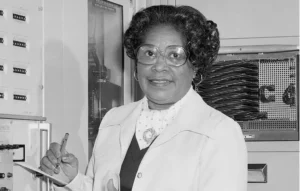Dorothy Vaughan: Dorothy Vaughan, an extraordinary mathematician and pioneer at NASA, played a crucial role in shaping the course of space exploration. Her life and achievements are a testament to resilience, intelligence, and a passion for breaking barriers. In this article, we delve into 11 seriously interesting facts about Dorothy Vaughan that showcase her incredible contributions and legacy.
1. Early Life and Education
Dorothy Vaughan was born on September 20, 1910, in Kansas City, Missouri. Growing up in a society marked by racial segregation, she faced numerous challenges. Despite this, Vaughan’s academic prowess shone through, leading her to earn a bachelor’s degree in mathematics from Wilberforce University in Ohio.
2. Teaching Career
After completing her education, Vaughan embarked on a teaching career. She worked as a mathematics teacher in public schools, making a positive impact on her students. Vaughan’s commitment to education laid the foundation for her later achievements.

3. World War II and the NACA
During World War II, the National Advisory Committee for Aeronautics (NACA), the precursor to NASA, recruited a diverse group of women known as “human computers” to perform complex mathematical calculations. Vaughan was among the select few African-American women chosen for this groundbreaking initiative.
4. Breaking Racial Barriers
Dorothy Vaughan’s work at NACA challenged racial and gender norms. She became NASA’s first African-American supervisor, overseeing the West Area Computing Unit. Despite facing discrimination, Vaughan’s leadership and expertise paved the way for future generations of minority scientists and mathematicians.
5. Transition to Electronic Computing
As technology advanced, Vaughan recognized the importance of electronic computing. She took the initiative to learn FORTRAN programming language, becoming proficient in computer programming. This transition solidified her role in shaping the technological future of NASA.

6. The West Area Computing Unit
Under Vaughan’s leadership, the West Area Computing Unit made significant contributions to various space missions, including the trajectory analysis for the first American in space, Alan Shepard. Vaughan’s team played a crucial role in the success of these missions.
7. Integration of NASA
Vaughan actively advocated for the integration of NASA facilities, promoting equal opportunities for all employees. Her efforts contributed to dismantling segregation within the organization, fostering a more inclusive environment.
8. Legacy in STEM
Dorothy Vaughan’s legacy extends beyond her lifetime. Her achievements have inspired countless individuals, especially women and minorities, to pursue careers in science, technology, engineering, and mathematics (STEM). The Dorothy Vaughan Medal for Excellence in Mathematics is one example of the recognition of her impact.
9. Posthumous Recognition
In 2017, Vaughan received posthumous recognition through the award-winning movie “Hidden Figures,” based on the book by Margot Lee Shetterly. The film highlighted the remarkable contributions of Vaughan and her fellow African-American women mathematicians at NASA.

10. Advocacy for Education
Throughout her life, Vaughan remained committed to education. She actively promoted STEM education and encouraged young people, particularly those from underrepresented communities, to pursue careers in science and mathematics.
11. Enduring Inspiration
Dorothy Vaughan’s story continues to inspire individuals worldwide. Her resilience, intelligence, and dedication to breaking barriers have left an indelible mark on the history of NASA and the broader field of STEM.
In conclusion, Dorothy Vaughan’s journey from a talented mathematician to a NASA pioneer is a story of triumph over adversity. Her legacy serves as a beacon of inspiration for those aspiring to overcome challenges and make a lasting impact in the world of science and technology.
OTHER TRENDING ARTICLES OF THE DAY:
WRITTEN BY RODGERS